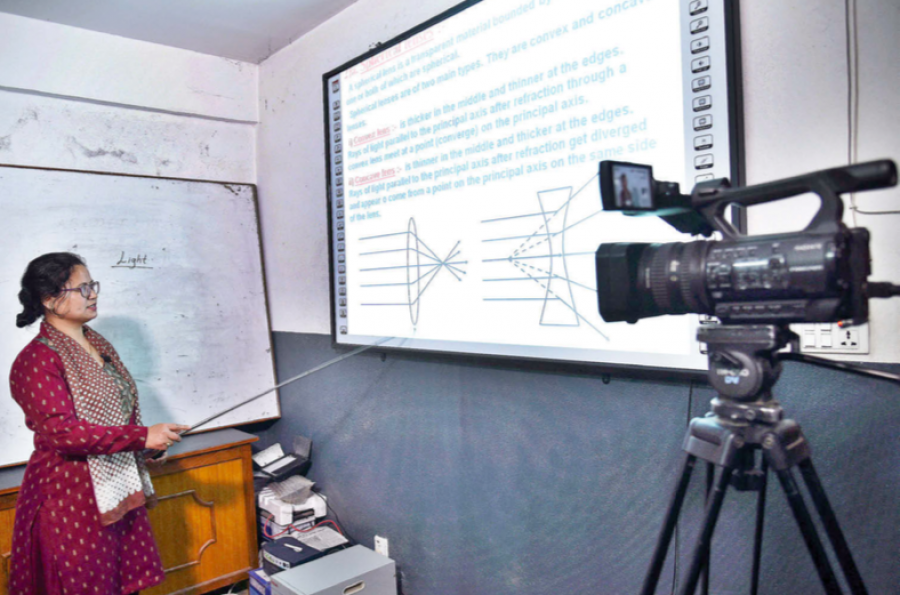Editorial
Online classes for some
The pandemic has exposed yet another harsh reality—the digital divide.
Schools in Nepal resumed classes last year around September, some earlier in July, even as the threat of the coronavirus continued to be there. That the country was seeing a steady decline in the number of new infections made many think everything was hunky-dory. It was not. Experts had warned that a second wave could hit the country sooner rather than later. And it has. As the number of new cases has been rising, what is more worrisome is, unlike in the past, children this time are being affected. After hemming and hawing for days, with private school operators continuously pushing for running physical classes, the government on Monday decided to shut schools in major cities until May 14 and run online classes. The cities where schools will remain closed are Kathmandu, Lalitpur, Biratnagar, Birgunj, Bharatpur and Pokhara metropolitan cities; Itahari, Dharan, Janakpur, Hetauda, Butwal, Ghorahi, Tulsipur, Nepalgunj and Dhangadhi sub-metropolitan cities; all municipalities in Kathmandu, Lalitpur and Bhaktapur districts; and Mechinagar, Birtamod, Damak, Rajbiraj, Banepa, Dhulikhel, Siddharthanagar, Birendranagar and Bhimdatta municipalities.
The Covid-19 pandemic has had a devastating impact on children and taken an unthinkable toll on them—social, emotional and academic. The decision to shut schools was the only best measure to protect children. What, however, is concerning is whether schools and students are well equipped for remote classes. Last year too, when schools remained shut amid the pandemic, they had run online classes. But such remote classes while beneficial were inaccessible. Despite facing difficulties in running online classes in the past, neither the government nor the schools gave a thought about improving the system. When schools reopened, the general assumption was everything was back to normal.
According to a study by the National Campaign for Education, an umbrella body of over 300 organisations working in the field of education, virtual learning was ineffective for 64.3 percent of the students surveyed. The study was carried out among students, guardians and teachers from different districts in all seven provinces. The study published in December last year showed that virtual learning didn’t yield satisfactory results. This and similar studies should have prompted the government authorities as well as schools to explore ways to make online classes more effective. Now that the schools have been shut in some major cities, online classes remain the only option, and concerns are already growing over how the children will fare. As the caseloads are surging, schools in other parts of the country too are likely to be closed. That online classes are ineffective is one part, the pandemic has exposed yet another harsh reality of today’s times—the digital divide. According to a UNICEF Nepal survey in August, more than two-thirds of schoolchildren in Nepal are deprived of distance learning opportunities. The Child and Family Tracker Survey, carried out among 7,500 households, showed that the poorer the household, the less likely it is that children have access to or use distance learning.
Nepali authorities are known for making reactive decisions rather than taking a proactive approach. That both the authorities and schools failed to learn from the past can have a long-term impact on children. As more and more children are being affected—of the more than 1,200 affected until Monday, 98 were children—the best option available was putting a halt to physically present classes and shutting schools. Online classes, despite their own demerits, are, hence, a Hobson’s choice. The best the authorities could have done—and must do now—is make clear policies and invest in resources and training for public schools to improve remote learning.




 8.12°C Kathmandu
8.12°C Kathmandu














